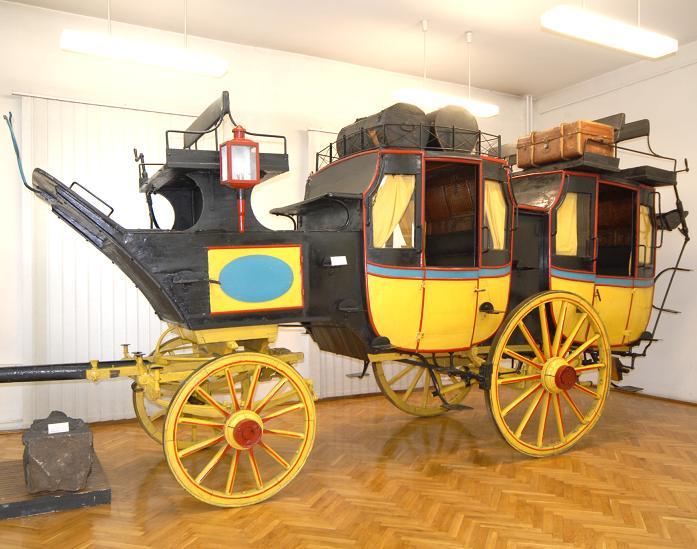 | The history of Poczta Polska The exhibition shows the development of postal devices in Poland since the creation of Poczta Polska in 1558 to reactivate the state-owned enterprise “Polska Poczta, Telegraf i Telefon” after the Second World War. The mail of the nineteenth century was especially richly documented. The exhibition shows postal uniforms from the 16th to the 20th century, trumpets and mail watches, a stagecoach clock, letters and letter scales, pencil cases and travel baskets, as well as other numerous exhibits and archives, including documents confirming the participation of posters in the November Uprising and January. The picturesque picture of the life of the old post is represented by engravings and oils with genre scenes related to sending letters and traveling. |
 | Signs and mailboxes The exhibition presents Polish and foreign signs and mailboxes from the 2nd place. XVIII in. To the end of the twentieth century. Among them is the oldest preserved Polish postal sign originating from the sewer station in Słonim from the reign of King Stanisław August Poniatowski. The exhibition also includes signs and boxes from the Russian, Prussian and Austrian partitions as well as from the interwar period, including the Russian box repainted in 1918 in Poland, as well as the first automatic Polish mailbox for the Syrena from 1924. Special cases are taken by mailboxes from Warsaw uprising. |
 | Horse-drawn postal vehicles In the exhibition, next to accessories related to old postal transport, three horse-drawn postal vehicles can be seen: a two-car stagecoach from the 19th century, 23 passengers and two service personnel, a stagecoach holding 9 passengers made in 1938-39 on the model of Berline mit Coupe of the Tsarist German Post from 1873 and a van to transport letters and parcels from 1925. The exhibition is enriched by an English lithograph depicting a scene connected with traveling by stagecoach and a postal map of Europe from 1856. |
 | Telegraph and telephone The exhibition opens with a collection of teletechnical devices, mainly telegraph and telephone sets. In addition to the Morse, Hughes, Baudot and Wheatston telegraphs invented in the 19th century, there are also teletype entries put into service at the end of the 20th century. Walls and desk phones with a separated microphone and receiver from the turn of the 19th and 19th century and the twentieth century, for example, an Ericsson desk phone from Russian production from 1898, and a Polish telephone structure from 1928. |
 | Radio and television The exhibition is an overview of the radio and television sets used in the Museum in Poland since 1929. Among them stands the TV prototype of 1947 and Polish detector radios, so-called. detectors produced in the years 1930 – 1931, as well as the first post-war radio of the Polish construction type “Pionier” from 1948. |